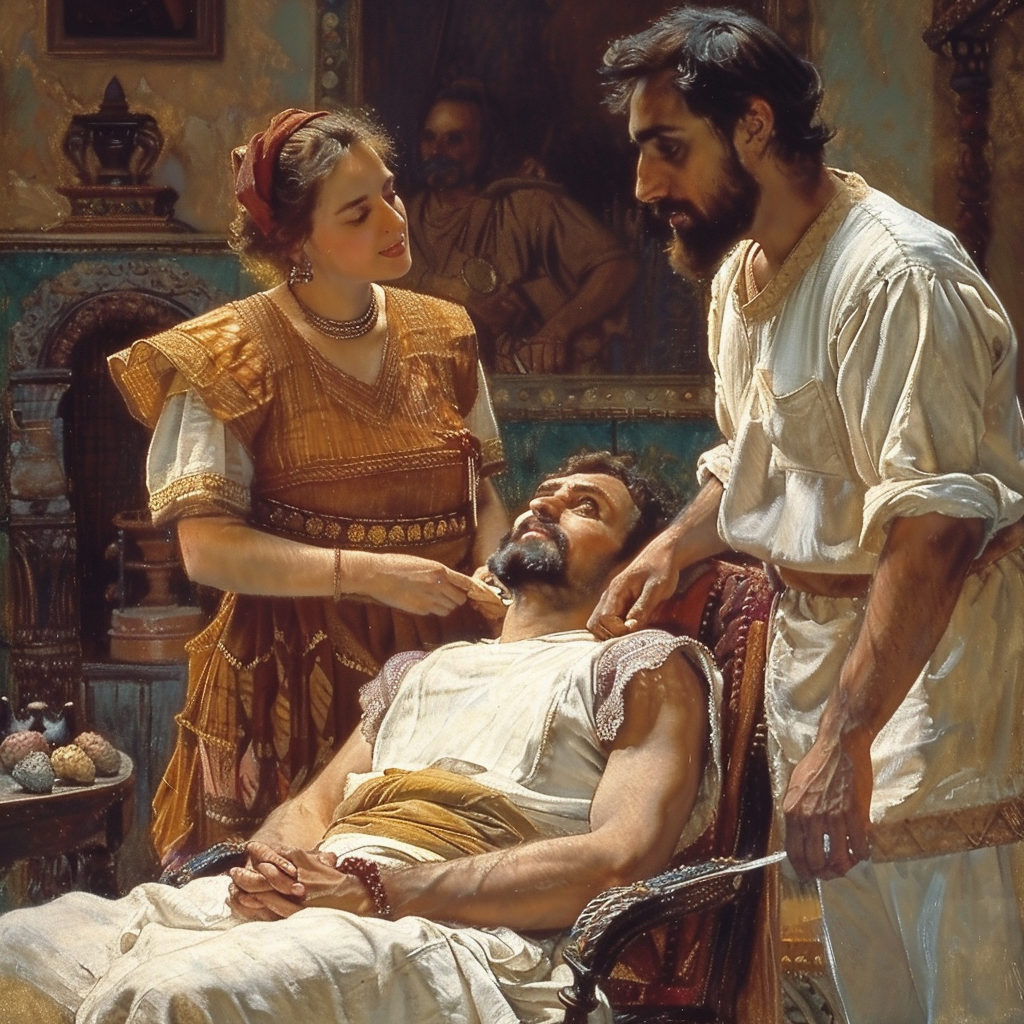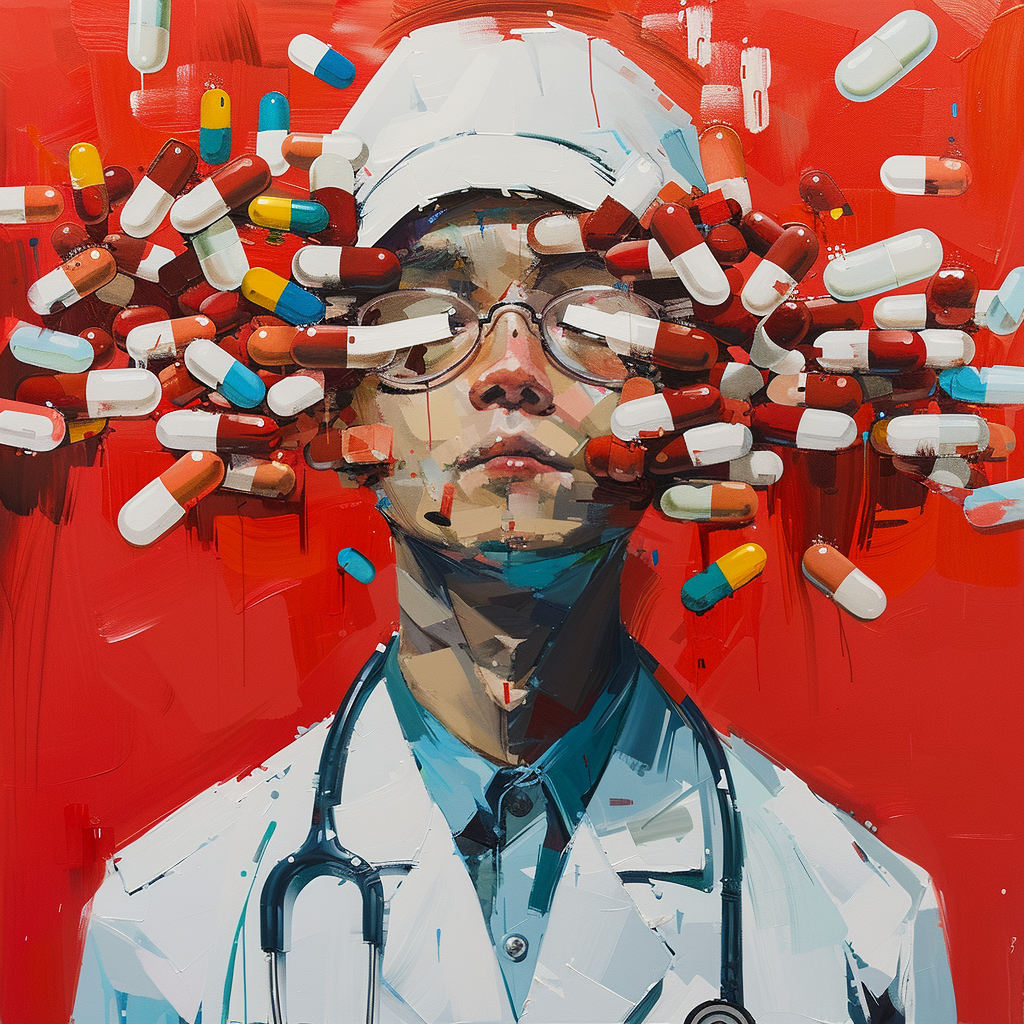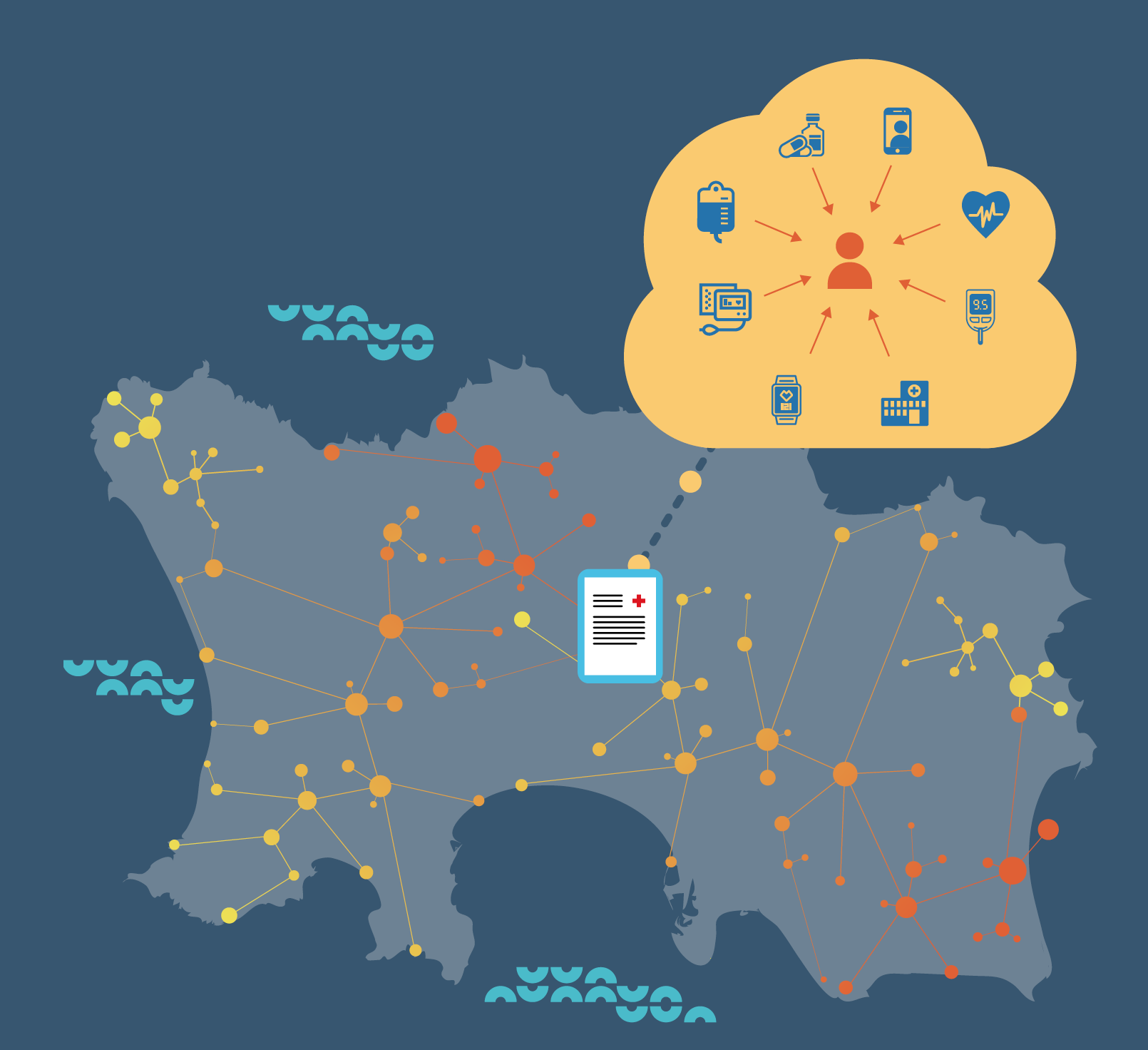Developing a new strategy for healthy Islanders
16 March 2024 / 7:27 am

‘It is not the strongest of the species who survives, nor the most intelligent, it is the one most adaptable to change’ Charles Darwin
In the United Kingdom the National Health Service is struggling and probably unsalvageable in its current guise. Over seven million people are now waiting for medical treatments or procedures. It is extremely difficult to see a general practitioner face to face when you need them. Ambulances are often taking hours to get to serious emergencies. In the United States of America, where access to healthcare depends on ability to pay, health outcomes are amongst the poorest in developed nations. Pay and work conditions for NHS healthcare staff continue to decline with endemic burnout, ongoing strikes and a generalised fatigue with loss of morale. Many doctors are leaving the UK for better conditions or seeking early retirement, and the staff that remain working are in need of rest.
In Jersey we are far better off in terms of access to high quality services but we are a long way away from providing a health and care service that we can be proud of. Waiting times for some procedures and tests remain excessively long, and access to primary care depends partly on your ability to afford it. There is a shortage of community carers, and we have an obesity crisis looming. The hospital building is decaying and needs replacing yet ongoing political fighting has delayed its successor, whilst costs spiral. Within the current hospital, there is a dependence on expensive locum or agency staff of variable clinical competency and who have little incentive to enhance or develop local services. It is extremely difficult to attract and then retain staff due to the high costs of living on Island and low rates of pay in the public sector. For example, a highly skilled specialist doctor recently enquired about working on Island. He didn’t apply as he would not be able to enjoy the standard of living that he currently does in Australia. Yet the locum he would have replaced is being paid considerably more.
New ways of thinking about healthcare and health workers need to be considered to improve this state, and it is not as simple as pouring in more money. Fundamental to this is to enhance the care and wellbeing of the staff. We need to build a culture of hope and trust in our staff whilst avoid some of the management and governance layers that are strangling the NHS as well as the finance industry. Strong and supportive clinical leadership has been shown to be the most effective way of running healthcare. A small amount of governance is really important to ensure quality and safety but too much control is worse than none. Time and resources are drained by regulations and usually with no staff or patient benefit. We need to think about undoing restrictions and regulation across the government so that people can function in a society that encourages diversity of thinking, entrepreneurship and risk taking. Failures should be congratulated not criticised. We can then learn from errors and develop forward at speed. This is the real meaning of “The Jersey Way”, an island famed for its entrepreneurial spirit.
Nevertheless, it is still possible to achieve change in Jersey. During the COVID pandemic I established and chaired a meeting of community health and government IT specialists called HealthX. Our aim was to rapidly improve digital health systems across the Island so that we were better equipped with health data to deal with the pandemic. We achieved an enormous amount of good work during that time, largely because we were able to move at pace without the shackles of government red tape and processes. Every decision we made had to have one of three aims: 1. To enhance the care and wellbeing of the staff, 2. To enhance the quality of life of Islanders, 3. To enhance the quantity of life of Islanders. If you look after the staff, they are better able to look after the patients.
So perhaps with a new government and a new heath strategy on the horizon, it is time to have a rethink about how we deliver healthcare. Our model is based on the 70-year-old NHS model with primary care (general practitioners), secondary care (hospitals) and tertiary care (UK specialist centres). The system is designed to look after people when they become ill, not to stop them from getting unwell. This model also has a healthcare specialist supply and demand problem. Our population is ageing and we need more people to care for our elderly, keeping them at home where recovery can be quicker and kinder. So without a change in healthcare model and a shift to preventative care we will continue to struggle to afford and deliver the healthcare services we need.
Medicine 1.0
Imagine a world where there was no such thing as healthcare. People get ill or injured, they suffer and then they die. There is no such thing as a doctor, nurse or hospital. Operations and drugs don’t exist. This is how human beings have lived for the majority of our existence and is described by Dr Peter Attia and others as medicine 1.0. You get shot by an arrow and you die. Life expectancy for Homo Sapiens would be equivalent to most great apes at around 30-40 years.

Medicine 2.0
And then imagine that a new ‘thing’ called healthcare is created, with access to the staff, equipment, tests and procedures such as the healthcare that we currently take for granted. This is medicine 2.0. You pull the arrow out, take treatment to heal the wounds and the person survives. This is the system we currently have and thanks to it, life expectancy has doubled. However, around the world in 2024 we face a growing demand for medicine 2.0 driven by an increasing and ageing population, with long-term conditions influenced largely by behavioural choices. Consequently, obesity is one of the biggest global risks to society, and life expectancies are decreasing in countries such as the United States of America. For example, at least 80% of heart attacks are avoidable by a handful of lifestyle changes including avoiding tobacco products and obesity, choosing the right nutrition and taking regular exercise. In addition, the people that we spend our time with are vital to enhance our qualities and quantities of life – having good social connections and purpose are vital for our health.

The good news is that the risks factors for heart disease are very similar to the risk factors for cancer, dementia, diabetes and generalised ill health. So by modifying behaviour the risk of each of these long-term conditions can be reduced, enhancing the quality as well as the quantity, of life of our population. Achieving this doesn’t have to be expensive, for example in Costa Rica, citizens can expect to live better and longer than their neighbours in the USA but with a small fraction of the costs of healthcare.
Medicine 3.0
In order to deal with the increasing demands on healthcare and with limited resources, we therefore need to move to medicine 3.0 where you don’t become ill in the first place. Avoiding the arrow. Increasing a person’s time without illness, their healthspan, and trying to match this to their lifespan. A focus on preventing illness should be at the heart of our government and individual’s health and education agendas. Emphasis must be placed at schools with daily habit formations to eat the right foods, exercise and avoid obesity. Parents will need to be helped. The food industry needs to be held to account and ultra-processed foods removed by practical or fiscal measures as quickly as possible. Fast food restaurants need to be encouraged to close and leave our precious Island. Without a move to this preventative focus, we will see the health and life expectancies of islanders diminish whilst the costs of providing care will increase.

Alongside this we need to consider where we should be delivering care in the island. Over the years, many people have asked where we should build a new hospital. The answer is simple. Jersey. Jersey is our hospital. We live in a small geographical locality connected by the fastest data network in the world. Not only that but in many respects we should consider all of us to be healthcare workers, within the hospital that is Jersey. We care for our family, partners, our friends and for ourselves. Some people get paid to do this, but the majority don’t. By using our fast data networks and having access to the right health information, you can then deliver healthcare anywhere in Jersey.
Healthcare facilities
So why then should we try and compress everyone into one hospital building. If you need a scan of your hand, it makes sense to go to a place where that can be done quickly and simply with parking and accessibility. Everything that the current town location is not. And why go to a place where all the sickest people are, when you just need a test or a consultation. CT scan in Trinity? MRI in St Ouen? Heart clinic in Grouville? With suitable free (electric) public transport there is no reason why not. The new hospital facilities design, with multiple buildings across Jersey allows us to scale up the smaller spaces that we need to deliver high quality care, and future-proofs the health service.

Paper to digital
One solution to the problem is to leverage the digital advantages that Jersey offers. Medical notes were historically scribed on paper, stored in folders and archived in a hospital basement. With computerisation, a considerable amount of health data in Jersey is now recorded digitally. There are two main electronic health record databases used in the Island. General practitioners have software called EMIS and in the General Hospital there is a central data system called Maxims which has recently been procured by the government. There is also a myriad of other health record systems being used in the Island run by health providers such as pharmacies, private medical specialists, physiotherapists, midwives and community nurses. Unfortunately, these health systems do not communicate directly with each other. This means that quite often a health provider does not have full access to the information on the care that an individual is receiving. A lack of shared records can only result in poorer standards of care.

It’s my data!
Throughout the world, there is a move to change the way that health data is controlled, and patient ownership of health data is fundamental to make this happen. Why is it that when we visit our general practitioners we can’t read our own medical notes? In hospitals, things are just as difficult – clinic letters, blood tests, results of biopsies, even data from digital device recordings are not routinely available to the patient unless specifically requested. This is wrong. Not only should the data belong to the patient (as it is their personal health information), but the person has usually paid for the medical service in the form of taxation or private medical care. In addition, most hospital electronic health record systems are designed around the institutional needs (focusing on administrative tasks and data gathering), rather than patient care. Patients have little access to the information stored about them and are therefore unable to correct any factual errors that have been recorded. Errors in healthcare records will also lead to worsened care, yet without patient-review, physicians often are unaware of the mistakes.
Portability
Similarly, as a patient moves from place to place their medical information needs to travel with them. When patients are assessed by new medical teams without full access to their health data, physicians often have no choice but to repeat some tests and investigations. In the USA about 10% of tests are duplicates as earlier results were not accessible. Even more important is the ability to access medical information during an emergency. With health data stored in different silos, emergency department medial teams often have very little previous health data available to help them make life-saving decisions.
The future therefore has to be the development of patient-centred record systems allowing patients to store, view and share their health data. Large corporations as well as governments have recognised the importance of this, and a UK health minister has made a pledge to provide online access to health records to all patients via the NHS app. Around the world companies like Apple and Amazon are helping organisations develop health data sharing services.
Jersey Care Record
So, what can Jersey do to not only enhance care in the Island but also capitalise on the growing Medtech business that is Digital Healthcare? Vital to all of this is the creation of the Jersey Care Record – a patient centred record system that allows the many health software systems in the Island to connect to a patient controlled central health record. The process is described in detail in Jersey’s Digital Health strategy published in 2016. The patient can become the data controller and choose who to share their health records with, much like people do when sharing information on social media.

Thanks to the speed of our internet, healthcare provision no longer needs to be totally reliant on local providers. Jersey already uses remote reporting of x-ray images, particularly out of hours, by sending the data to places such as Australia where the doctors are awake. Similarly, many digital health companies are providing internet-based analysis and storage of health diagnostic information. Jersey’s physical and financial position makes it an ideal locality to host, analyse and distribute this in a system called data-warehousing creating new industries on Island. People are now more mobile, not just physically but also virtually, demanding 24-hour health service and attention. If you manage your own health data via the Jersey Care Record, why would you wait for days to get an appointment with a doctor when you can access the specialist that you want, when you want – online. New digital health devices such as smart watches, connected machines including body-impedance analysis scales, heart traces and blood pressures machines, near patient blood testing systems augmented by the rapid evolution of artificial systems such as Bing and ChatGPT can all help. Many of these systems are already in use within our health service. So by providing patients with their health data and access to the devices and knowledge to look after themselves, they are more likely to be healthy and reduce demands on healthcare.
Seven tips to maintain a healthy and long life:
- Be active and exercise daily – factor this into the start of every child’s and worker’s day
- Eat locally, plant-based , small amounts and with the right people
- Never smoke
- Avoid weight gain – if you are overweight focus energies on reversing this
- Minimise alcohol
- Maintain a positive attitude to life and health
- Check and normalise your blood pressure and cholesterol
Conclusions
Preventative approaches to health should be at the heart of education and government policies but understanding that they take a long time to achieve their aims (far outside of the political cycle). We need to plant trees knowing that we will never sit under their shade. A culture of hope and trust in our staff is essential whilst reducing any bureaucracy that strangles healthcare, change and innovation.
Original published in the Jersey Evening Post 3rd February 2024: Medicine 1 2 3
More Posts
7 May 2025
A digital health diary revisited
4 February 2024
A digital health diary for Jersey
27 December 2022
Utilising artificial intelligence in cardiology practice
12 June 2022
Under the bonnet – time for your heart’s MOT
12 March 2022
What is heart valve disease and what does that mean for me?
12 January 2022
Preventing heart disease using augmented digital health intelligence
1 October 2021
How heart health has been impacted by COVID-19
1 August 2021
The importance of the rhythm of your heart
21 June 2020
What is atrial fibrillation?
8 April 2020
Coronary heart disease and risk of heart attacks
11 January 2020
The Era of Immersive Health Technology
22 September 2019
The heart and stress
18 August 2019
Screening for Atrial Fibrillation and the Role of Digital Health Technologies
20 November 2018
Ectopic beats – how many count?
28 July 2018
How can immersive VR and AR technologies improve your physical and mental health?